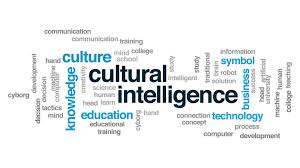
Special Issues in the Design and Implementation of Business Improvement Strategy: A Case Study of 24-7 Service Centre Company
Order Instructions:
Dear Admin,
Note: To prepare for this essay please read the required articles that is attached
I need an essay in the following subject:
What are the special issues facing public sector organizations like the Highways Agency when it comes to designing and implementing a business improvement strategy?
What special issues would need to be faced by your company or another you know well? Explain with examples
1) The answer must raise appropriate critical questions.
2) Do include all your references, as per the Harvard Referencing System,
3) Please don’t use Wikipedia web site.
4) I need examples from peer reviewed articles or researches.
5) Turnitin.com copy percentage must be 10% or less.
Note: To prepare for this essay please read the required articles that is attached
Appreciate each single moment you spend in writing my paper
Best regards
SAMPLE ANSWER
Special Issues in the Design and Implementation of Business Improvement Strategy:
A Case Study of 24-7 Service Centre Company
Introduction
The design and implementation of business improve strategies is not always an easy task for many public sector organisations.There are certain critical issues that they must face and meet failure to which their business could be at stake. Strategic planning is core in the fight for space in the ever competitive business market and this is why some organizations do better and keep on improving day by day than others. This case study focuses on the 24-7 Support Service, which a social service company based in Leicester City. There are quite a number of issues that this company has strived to put into consideration whenever a new business improvement plan is designed and implemented. Such issues are as discussed below.
Expertise
More often than not, the design and implementation of any new business improvement strategy calls for certain expertise. It therefore forces a company to source for personnel with specific skills that are commensurate with that particular area of improvement. According to Rasha & Fady (2013), human resource is a bank of ideas and knowledge and this is why a company that invests on it must always be successful because it has the capacity for creativity and innovativeness. 24-7 Support Service had wanted to advance its calls and rescue services. To do this, they had to acquire more IT personnel to improve the call system as well as medics and guards to aid in rescue operations.In addition to acquiring personnel from external sources, they also opted to train the existing ones as a way of improving their capacity.The issue of expertise therefore ought not to be taken for granted during any business development plan for any organisation.
Assessment
When coming up with a new business strategy, a company must first a foremost formulate an assessment method. Assessment is very crucial because it makes a company to know a particular area in their business that needs adjustment or improvement. It creates a sense of objectivity before any strategy is designed or adopted. Needs assessment in a company will enable the identification of various loopholes that might exist and therefore determines the corrective measure to be taken by the company (Seedee, 2012). This corrective measure must always be captured in a business improvement strategy.For instance, in the case of 24-7 Service Centre, assessment helped in knowing the minor details on what resources they needed, in what proportions and when should this to be effected.
Performance improve
As indicated by Harris, McAdam, McCausland & Reid (2013), it is only logical for a company to design strategies that will ultimately improve its business performance when implemented. Performance improvement is an aspect of the overall business improvement strategy. It has a direct bearing on the speed at which quality services are offered to clients. 24-7 Support Service had intended to increase the number of clients it serves every day. During the implementation of this new strategy, they had noticed a sharp increase in the number of clients served both during the day and at night and this was a plus on their side.
Customer satisfaction
Another key issue in business improvement is the focus on customers given that they are the determinants of the success or failure of a company. It is the interest of any company to be able to impress there customers with the kind of services and products that they offer because this will keep them coming over and over again. In addition, they could also influence other new customers to come and this will only happen in the event that they have achieved customer satisfaction (Harris et al., 2013). The betterment of call and rescue services at 24-7 Service Centre was able to enhance the satisfaction of their clients and this has made the company to become one of the leading social service centres within Leicester and its environs. The company is also well aware that it could be so costly to get new clients than to retain the existing ones and hence, they made customer satisfaction a very important aspect of their business improvement strategy.
Communication
The manner in which information is passed among the management, the employees and other stakeholders of company is also very critical during the formulation and implementation of a business strategy. It has been identified that the most successful approaches of communication in business are either bottom up or top down (Seedee, 2012). The effective flow of information in an organisation should always follow a particular order of hierarchy to avoid confusion or misinformation. This is because an organisation is a system made up of several organs and not an individual who can do or say anything at will. The success of 24-7 Service Centre is attributed to the fact that there was smooth flow of information and ideas from the management to the team players and vice versa.
Conclusion
The study on 24-7 Service Centre has identified very critical issues about strategic planning in businesses. All these issues are dependent on one another and whenever one is jeopardised, the remaining ones may not be effectively achieved given that they all form part of a system.
Reference list
Harris, R., McAdam, R., McCausland, I. & Reid, R. 2013, “Levels of innovation within SMEs in peripheralregions: the role of business improvement initiatives”, Journal of Small Business and Enterprise Development,vol. 20, no. 1, pp. 102-124.
Rasha , E.A. & Fady, R. 2013, “Business improvement using organisational goals, Riva technique and e-business development stages”, Journal of Enterprise Information Management, vol. 26, no. 5, pp. 577-595.
Seedee, R. 2012, “Moderating Role of Business Strategies on the Relationship between Best Business Practices and Firm Performance“, International Journal of Business and Social Science, vol. 3, no. 24.
We can write this or a similar paper for you! Simply fill the order form!












